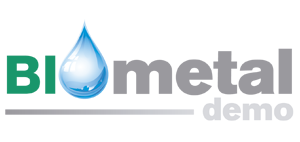WP1

- To share analytical methodologies, indicators, parameters and benchmarks of quality of water to be treated.
- To unify information and interaction systems between the partners, measurement of project progress and contingencies.
- Comparative analysis of the performance and kinetics, energy inputs, biomass costs and availability, technical and economic advantages and drawbacks of the different metal removal/recovery bioprocesses at lab scale.
- To select the best bioprocesses for scaling-up at pilot demonstration plant for each of the two industrial wastewaters.
WP2

- To develop, at a laboratory scale, a tertiary biological process based on the capabilities of sulphate-reducing bacteria (SRB) as a final polishing step to integrate the treatment of metal wastewaters resulting from different sources (e.g. mining, plating), permitting the reuse of the treated waters for irrigation.
- To use SRB communities simply enriched from environmental samples and natural and locally available substrates, which also need to be subjected to treatment, resulting in a simple, efficient and low-cost technology.
- Optimization and technical improvement of the bioprecipitation process at laboratory scale (using SRB) in order to contribute to its industrial scale implementation..
WP3

- To develop, at a laboratory scale, a tertiary biological process based on the catalytic activity of immobilized phytase from cereal bran, hydrolyzing phytic acid from bioethanol processing and agricultural industry by-products.
- To use as active agents locally available industrial by-products resulting in a simple, efficient and low-cost technology.
- Optimization and technical improvement of the bioprecipitation process at a laboratory scale (using SRB and Phytase) in order to contribute to its industrial scale implementation..
WP4

- To develop, at a laboratory scale, a tertiary biological process based on the capabilities of agricultural industry biomass (low-cost by-products) and marine algae for the sequestration of different metal species as a final polishing step to be integrated after the physicochemical treatment of metal wastewaters mining, ceramic tile and electroplating industries.
- To use as active agents locally available industrial by-products resulting in a simple, efficient and low-cost technology.
-
Optimization and technical improvement of the biosorption process at laboratory scale (using beet pulp, brown algae and hemp by-products as biosorbents) in order to contribute to its industrial scale implementation:
- Characterization of the metal sorption uptake of each biosorbent.
- Modelling of the biosorption process.
- Optimization of a continuous biosorption process.
- Determination of the optimal conditions of both desorption and regeneration of the biosorbent for its reuse.
WP5

- Elaborating a portfolio of biosorbents (playing with physical and/or chemical modifications of the biopolymers (alginate and chitosan).
- Pre-screening of sorption performances (simplified sorption protocol for pre-selection of a limited number of Materials).
- Investigating sorption and desorption performance of selected materials manufactured in the project.
- Investigating dynamic sorption (and desorption) on single-metal solutions and multi-metal solutions.
- Evaluation of sorption (and desorption performance) of selected materials for the treatment of real-like solutions.
- Manufacture of materials (sorbents) to be tested by industrial partners at pilot-scale.
WP6

- To design and construct one prototype of a wastewater treatment plant, specifically adapted to treat wastewater coming from different sectors, which will be used lately in the demonstration stage.
- Preparation of the facilities in every end-user, transport, installation and optimization of the prototype in the company.
- To adequate end-user facilities in order to install assembled prototype and further evaluate the efficiency of the proposed eco-innovative technology.
- To start up, tune and greatly optimise the prototype
WP7

- Industrial validation and performance assessment of the prototype for wastewater treatment designed and constructed in the previous phase in a real installation.
- To monitor the performance of the prototype in a test period.
- To optimize working parameters of the prototype.
- To test incoming/treated water samples
WP8

- To design and construct one prototype of a wastewater treatment plant, specifically adapted to treat wastewater coming from different sectors, which will be used lately in the demonstration stage.
- Preparation of the facilities in every end-user, transport, installation and optimization of the prototype in the company.
- To adequate end-user facilities in order to install assembled prototype and further evaluate the efficiency of the proposed eco-innovative technology.
- To start up, tune and greatly optimise the prototype.
WP9

- Industrial validation and performance assessment of the prototype for wastewater treatment, designed and constructed in the previous phase in a real installation.
- To monitor the performance of the prototype in a test period
- To optimize working parameters of the prototype.
- To test incoming/treated water samples.
WP10

- To design and construct one prototype of a wastewater treatment plant, specifically adapted to treat wastewater coming from different sectors, which will be used lately in the demonstration stage.
- Preparation of the facilities in every end-user, transport, installation and optimization of the prototype in the company.
- To adequate end-user facilities in order to install assembled prototype and further evaluate the efficiency of the proposed eco-innovative technology.
- To start up, tune and greatly optimise the prototype.
WP11

- Industrial validation and performance assessment of the prototype for wastewater treatment designed and constructed in the previous phase in a real installation.
- To monitor the performance of the prototype in a test period.
- To optimize working parameters of the prototype
- To test incoming/treated water samples.
WP12

- Development of a dynamic project website
- Benchmarking of bioenergy sector.
- Management of Intellectual Property.
- Dissemination and training activities and in a relevant format for different target dissemination communities.
WP13

- To form a strong organizational structure to achieve effective and result-driven management.
- To ensure that goals and objectives are clearly defined and visible throughout the project.
- To setup the consortium agreement.
- To monitor progress among planned and actual activities. To identify risks and issue corrective action plans as necessary.
- To setup active administrative and technical management throughout the whole project life-cycle, ensuring timely delivery of all the management and technical reports to the EC.
- Provide efficient financial management and issuing of payments as necessary. Manage Audit trail.




